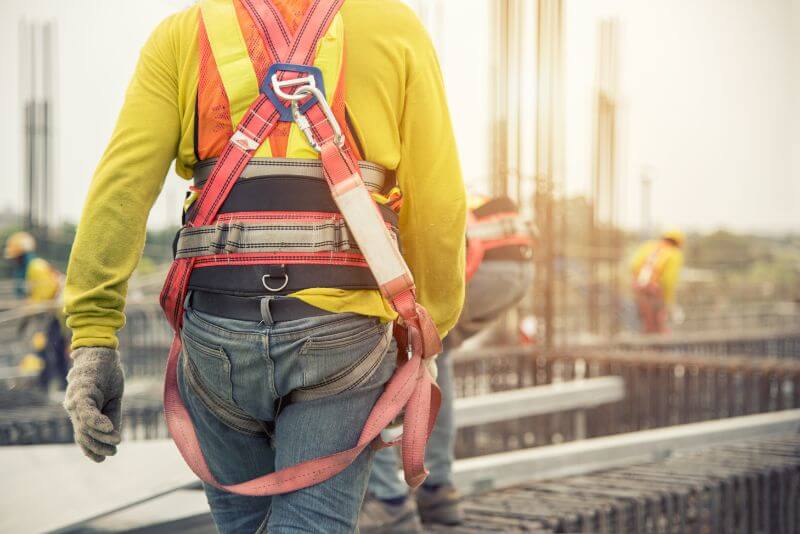Fall Protection on Site – Are You Prepared?
Safety should be the priority on any construction site, as every build is full of potential hazards. Fall-related injuries are particularly common, but the potential for problems is greatly reduced by following a robust health and safety strategy.
By identifying the hazards and implementing sensible and easy to understand procedures, your site and your employees will be far safer, and they’ll be able to work more efficiently.
Main Causes of Falls
A construction site is full of hazards – uneven, slippery surfaces, trailing cables, obstacles such as tools and equipment, unprotected edges or insufficient care on ladders, to name but a few. Rectifying this doesn’t need to be difficult or time-consuming.
A few common-sense measures are a good place to start. All tools, buckets and cables should be securely tidied away when not in use. Alternatively, cordless tools will cut down on clutter and eliminate lurking cables. This applies throughout the site, but some areas are more dangerous than others.
All workers should wear hard hats and work boots. Earplugs, gloves, safety glasses and high viz jackets may also be appropriate. The finer points will vary depending on the nature of the work, and site managers should provide clear guidance. With the best intentions, accidents will still occur, but the correct gear will help to minimise the impact in many cases.
Problem Areas
Scaffolding
- This must be sited on a strong, solid and level base.
- It must be securely attached to the structure, and easy and safe to access.
- Walkways should be well lit and protected with guardrails.
- Scaffold boards can be metal or wooden, but if using the latter these must meet British Standard requirements to ensure everyone’s safety – ideally BS2482:2009.
- The total load mustn’t exceed the scaffolding’s rated weight.
Roofs
- All trip hazards should be removed.
- Workers must wear a full-body harness attached to a safely anchored fixed-line.
- The line should be short enough to prevent hitting the ground.
Unprotected Edges
- Holes in floors or walls must be securely covered or clearly roped off.
- If covered, this must support the workers’ weight plus materials and tools.
- The area should be well lit and free of clutter.
Ladders
- Ladders must rest on a firm and secure base and if upright they should be firmly attached to the structure.
- Workers should always have two feet and at least one hand on the ladder and face towards it.
- Don’t be tempted to overreach and never try to stand on the top rung.
Guide and Educate Your Workforce
However thorough your health and safety procedures may be, they’re only as good as the people following them. It’s essential your employees understand what’s expected of them and follow the guidelines accordingly.
New workers must receive a comprehensive induction, and an emphasis on safety should be part of the company culture for everyone, including long-term staff. It’s all too easy to become complacent over time.
Regular briefings between senior management, site supervisors and workers will make everyone feel included and highlight any gaps in understanding as soon as they appear.
Keep Health and Safety on Track with Be Safe Technologies
Keep your site safe and compliant with our innovative All-In-One app. It’s quick, easy and saves you money.
Contact Be Safe Technologies today
We are hiring! We need experienced and self-motivated people to help us grow even faster! Perhaps that’s you – take a look at the jobs and apply now.
See the full list of jobs available here


